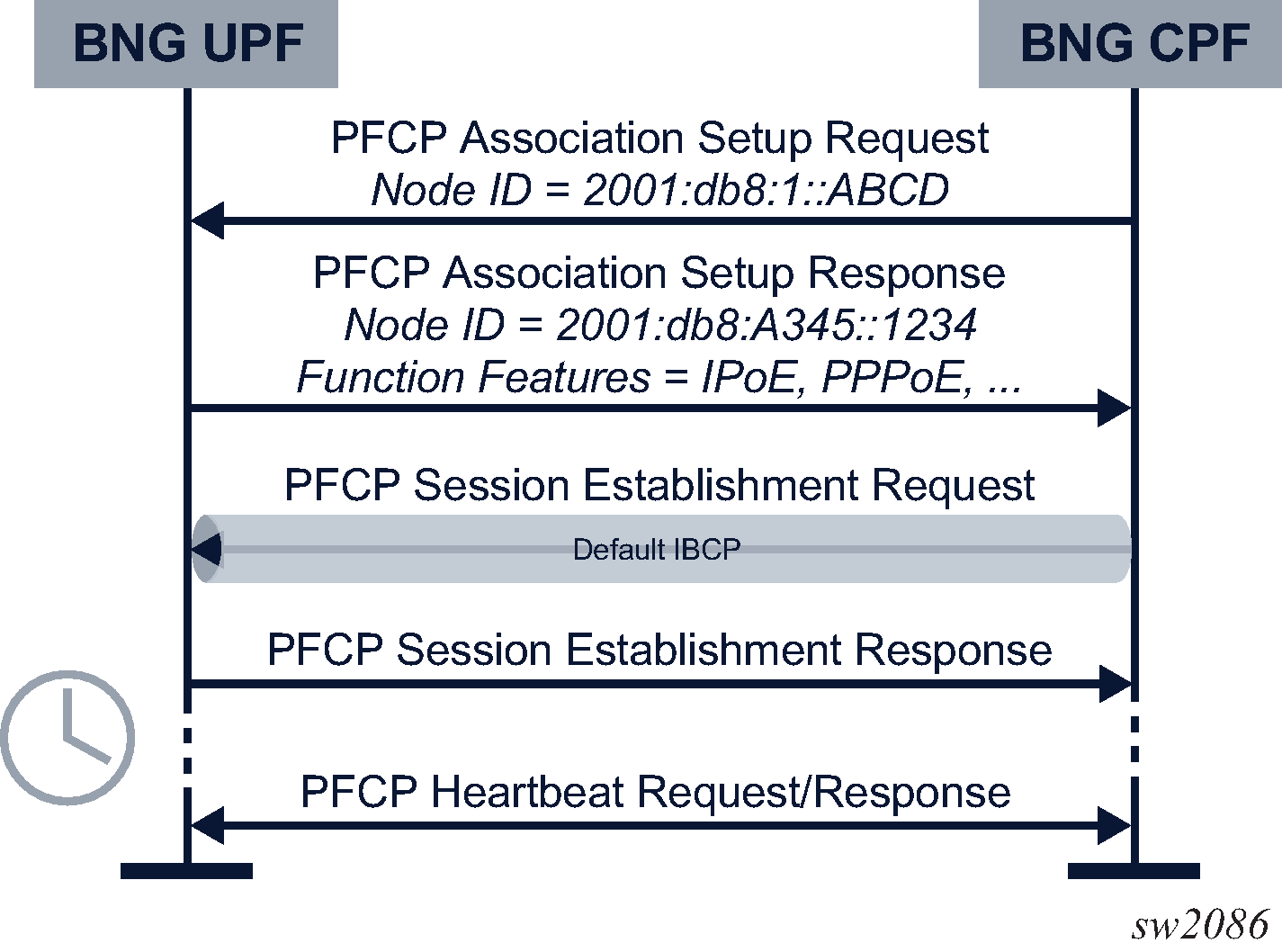UPF PFCP association
A BNG CUPS UPF requires an active PFCP association with the BNG CUPS CPF. Through the PFCP association, the BNG CPF installs the rules that determine how the BNG UPF forwards subscriber traffic.
The BNG UPF requires the PFCP association to be preconfigured using the configure subscriber-mgmt pfcp association command.
Each PFCP association is linked to a specific peer, interface, and router instance. The loopback interface is the recommended interface because it allows resiliency over multiple physical interfaces.
As soon as the PFCP association is configured and administratively enabled, the UPF connects to the BNG CPF by sending PFCP Association Setup Request messages. The UPF sends the messages periodically, until the association is either set up or administratively disabled.
To configure the retry interval for the PFCP association setup, the association-setup-retry command is used.
The UPF can also set up the PFCP association when it receives a PFCP Association Setup Request from the configured peer. However, the UPF does not accept an association setup from a non-configured peer.
Figure 1 shows the PFCP association setup flow for the BNG UPF.

The PFCP protocol supports node identification using node IDs. The node ID can be either an IP address or a FQDN. By default, the IP address of the linked interface is chosen; however, this can be overridden using the node-id command. All the UPFs in a deployment require different node IDs.
PFCP messages sent for an active association use the configuration under the PFCP association tx command to define the following:
-
The ttl command defines the outgoing TTL.
-
The timeout command defines the request message timeout (T1).
-
The retries command defines the number of times a request message is retried (N1).
The QoS of the outgoing PFCP messages is managed through sgt-qos command configuration in the routing instance used by the PFCP. In the application list command, a pfcp keyword can be mapped to its own DSCP value (default NC2), after which that DSCP value can be mapped to a specific Forwarding Class (FC).
See the 7450 ESS, 7750 SR, 7950 XRS, and VSR Quality of Service Guide, section "QoS for Self-Generated (CPU) Traffic on Network Interfaces" for more information about QoS configuration.
When a PFCP association is administratively disabled, it is not immediately brought down. The BNG UPF requests a graceful CPF release and keeps the PFCP association up until the BNG CPF removes it, or the association release timeout expires.
To configure the PFCP association release timeout, use the association-release-timeout command.
To force an immediate PFCP association removal, configure the association release timeout to none.
The following example shows a BNG UPF PFCP association configuration:
[gl:configure subscriber-mgmt pfcp association "BNG-CPF"]
A:admin@DUT-B# info detail
admin-state enable
## description
association-setup-retry 1
association-release-timeout 3600
path-restoration-time 180
node-id {
## fqdn
## use-ip-address
}
interface {
router-instance "to_cp"
name "endpoint"
}
peer {
ip-address 17.17.17.10
}
heartbeat {
interval 60
timeout 5
retries 4
}
tx {
timeout 5
retries 3
ttl 255
}